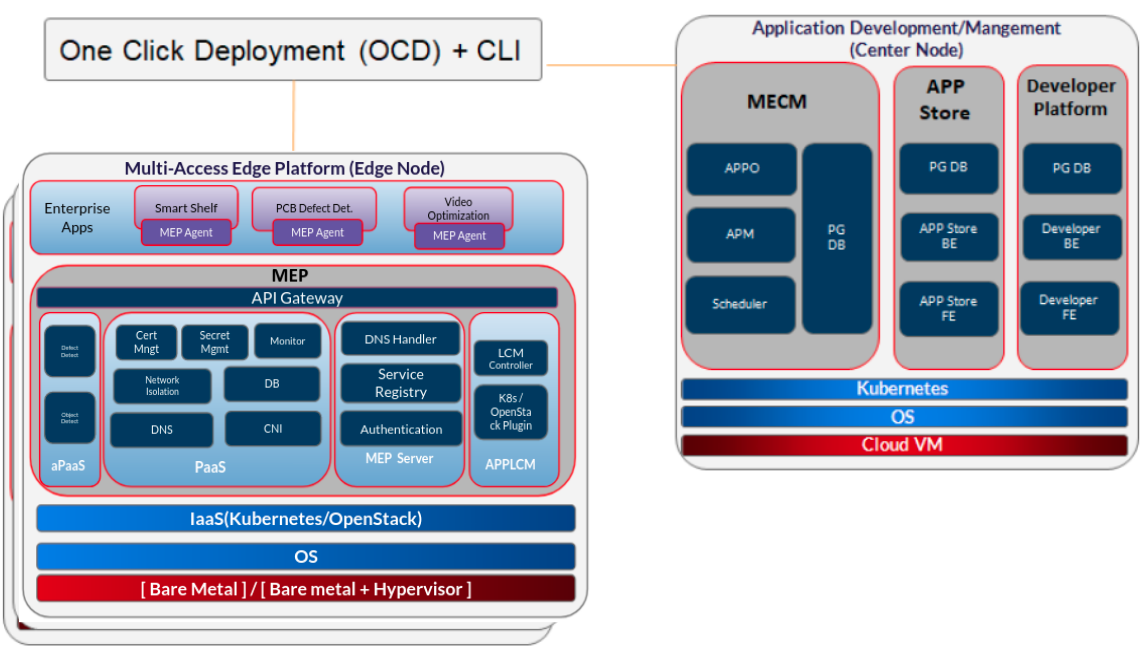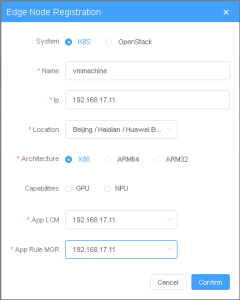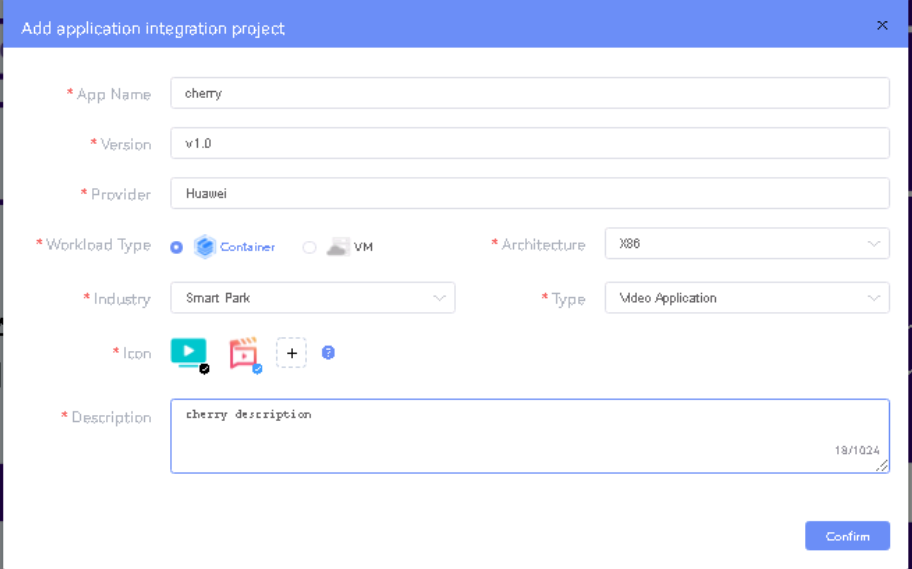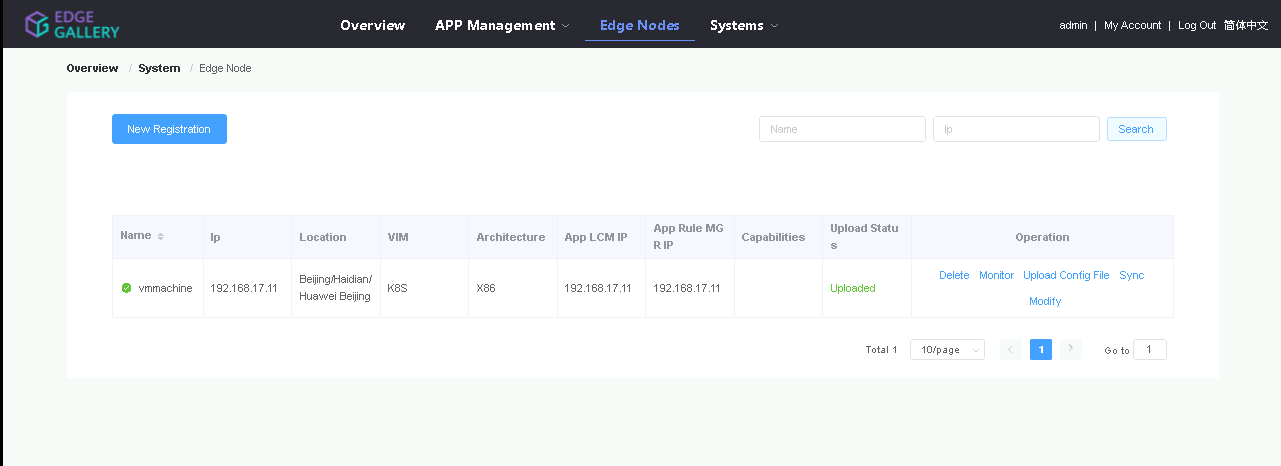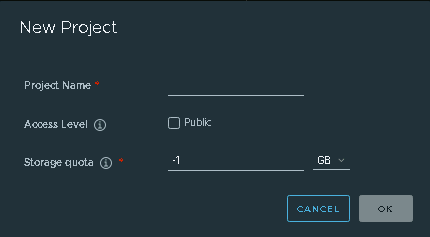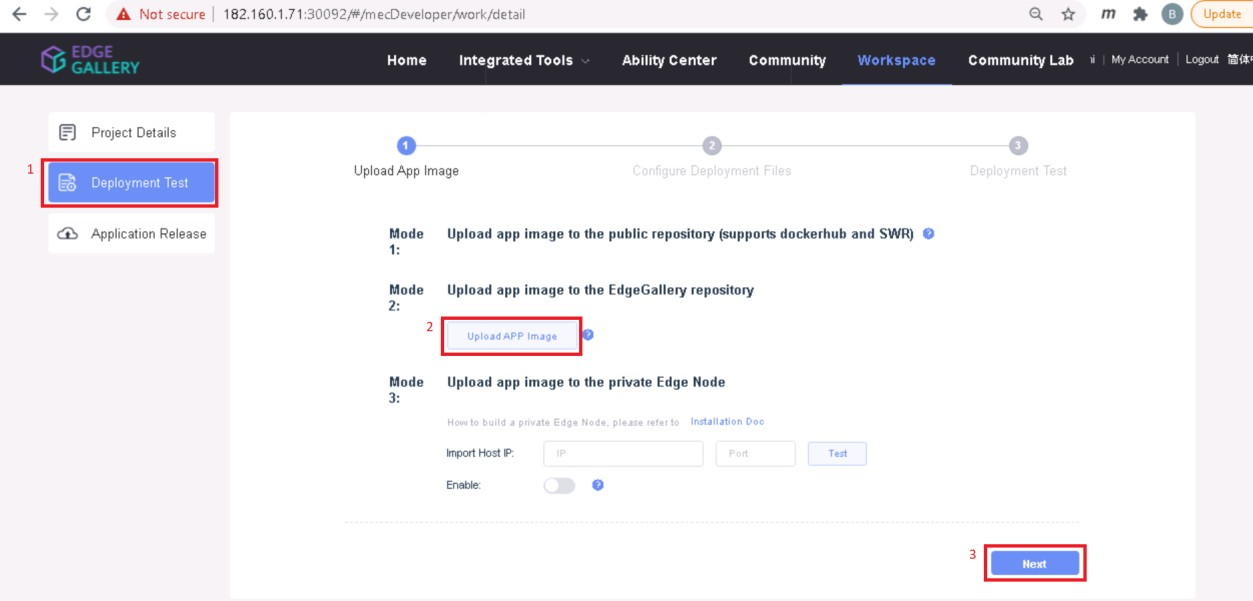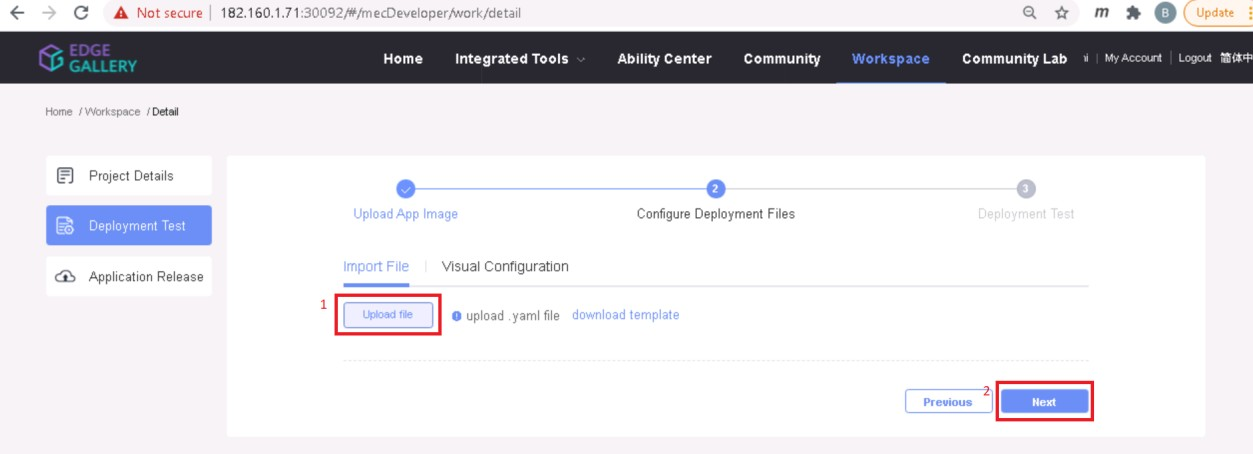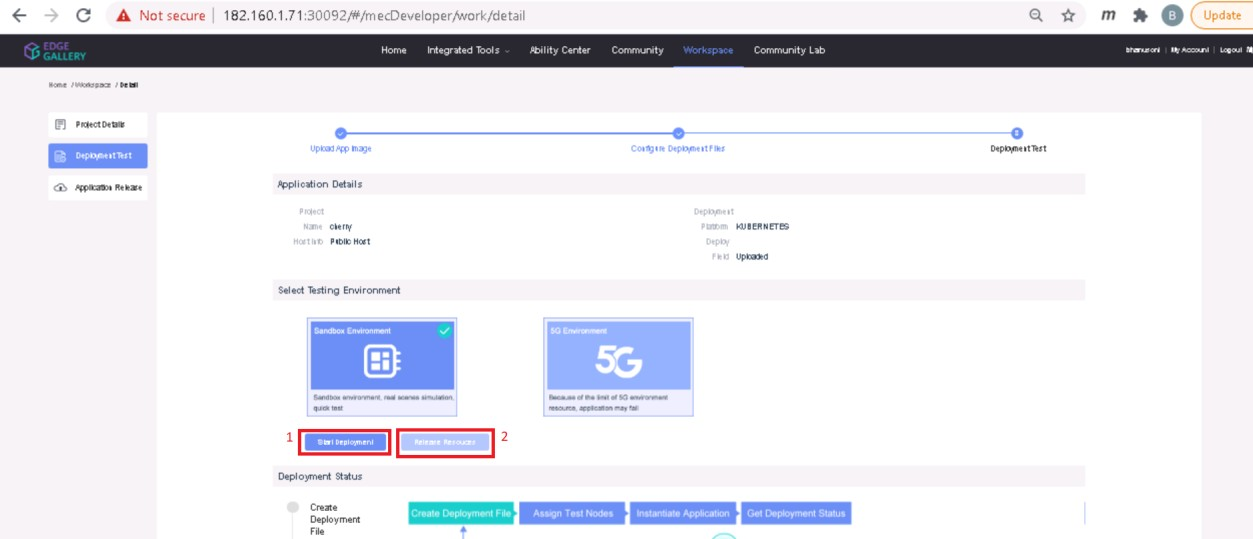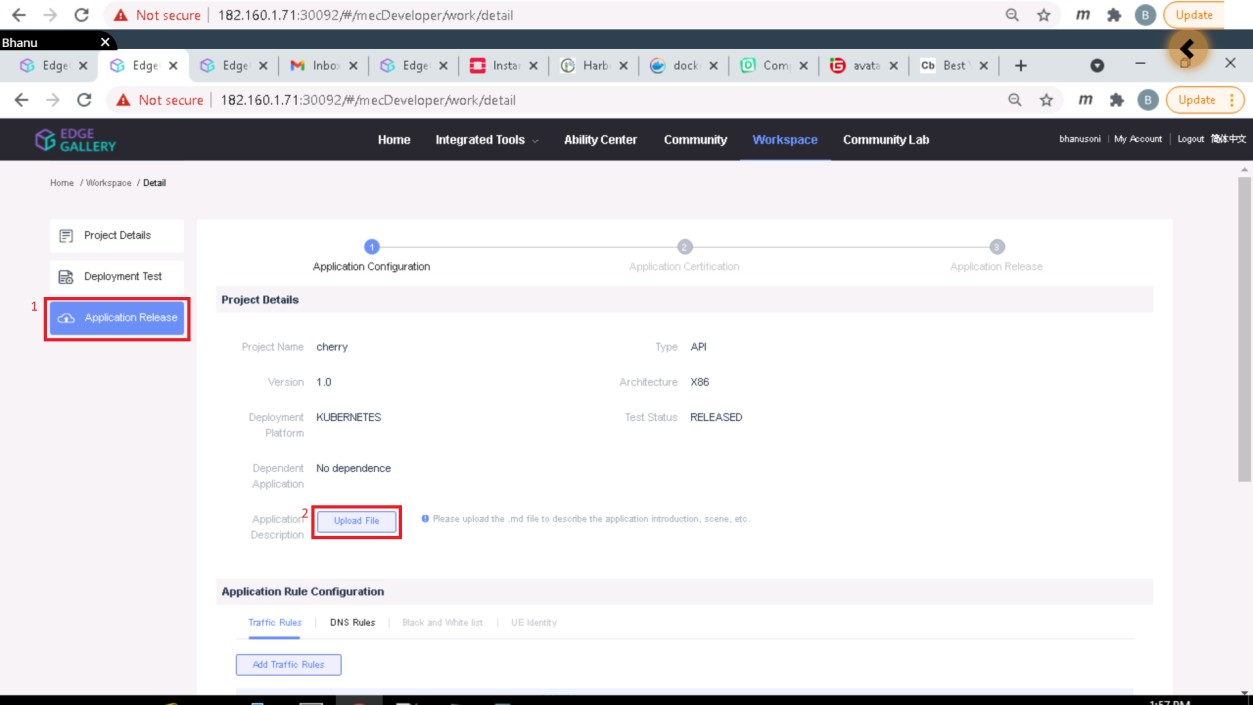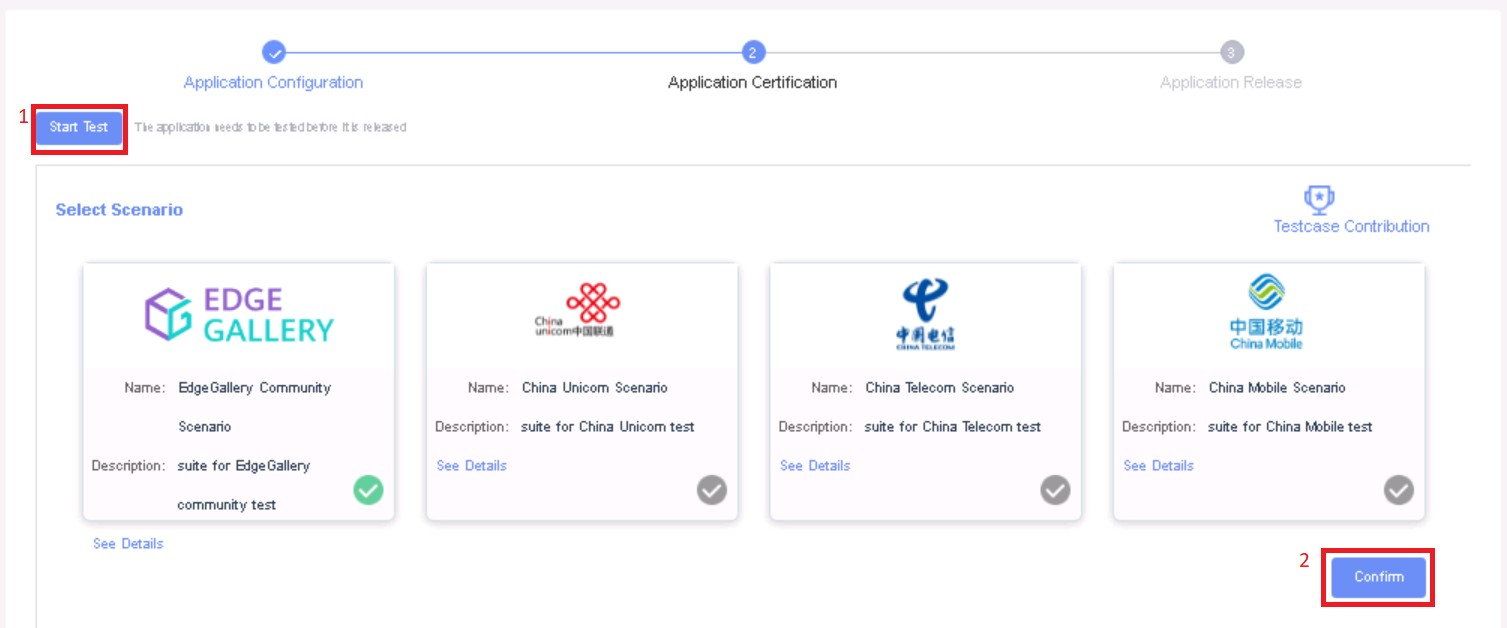...
Note: For Development environment two nodes is sufficient, where one node plays a dual role of One-Click Deployment Node and MECM Node with other as MEC Host.
Figure: EALTEdge Deployment Architecture
...
For Virtual Deployment minimum three2 Virtual machines(OCD and Center node can be deploy on same VM or in different VMs), following are the virtual machines and their usage
...
ealt-edge/ocd/infra/playbooks/hosts-aio
ealt-edge/ocd/infra/playbooks/var.yml
For EALT-EDGE stack:
ealt-edge/ocd/infra/playbooks/ealt-inventory.ini
...
Port: 30204
1.2. click on Systems ->App Rule -> New Registration
...
Repo Password: Harbor12345Harbor@edge(harbor password)
Vendor: vendor(any general name)
2. Login log in to Developer Portal
MECM Portal https://ip:30093
2.1. Add k8s node:
. Click on Edge Nodes ->New Rgistration
System: k8s
Name: edge1(any general name)
System: k8s Lcmip: sandbox ip(for testing purpose can provide edge ip, if no sandbox env) IP: edge public IP
mecHost: sandbox ip(for testing purpose can provide edge ip, if no sandbox env) Port: 31252 Location: Select from the drop-down
Protocol: https Architecture: X86x86
Status: Normal Port Range: leave as it is Capabilities: select none
Address: Bangalore UploadConfig File: upload sandbox env kubeconfig file App LCM: Select edge IP from the drop-down box
1.2 Click on Workspace -> Create Project -> Application Integration -> Start - Provide App Name, Version, Provider, Workload Type, Architecture, Industry, Type. App Rule MGR: Select edge IP from the drop-down box
- Upload Icon, provide Description. And click on confirm.
2.2. Download /root/.kube/config file from edge node
1.3. Now click on Deployment Test. - Upload Docker images directly from portal by clicking on Upload App Image Or, directly push Docker images to Harbor repo (takes lesser time, preferred)And click on Upload config file to upload.
3. log in to harbor Portal https://ip:443
- Click next, upload deployment yaml file now. 3.1. Add three new projects
- After config upload, click next and click start deployment 3.2. Those three projects' names are appstore, developer, and mecm. And select access level to the public.
- After Deployment is success, click on Release Recourses 3.3. Final page will look like the below screenshot.
4. log in to Developer Portal https://ip:30092
Note: 4.1. Add sandbox env to deploy application before publishing
- Click System ->Host Management ->Add Host
While Deployment test if any error happens, open ATP portal (https://ip:30094) in another tab of browser, sing in, come back to developer portal and re run deployment test - gitee.com/edgegallery/applications repo provides, A lot of applications with their logo, deployment yaml & user guides.
1.4. Now click on Application Release Name: general name
Upload file for Application Description System: k8s
Click save config, click Next Step, click Start Test, scroll down to find & click Start Test button, click Next Step, click publish to publish application to appstore.
2. Login to MECM Portal https://ip:30093
Lcmip: sandbox ip(for testing purpose can provide edge ip, if no sandbox env)
mecHost: sandbox ip(for testing purpose can provide edge ip, if no sandbox env)
Port: 30204 2.1 click on Systems -> MEPM -> New Registration
Name Protocol: Applcmhttps
IP: applcm “public ip” Architecture: X86
Port Status: 31252 Normal
2.2. click on Systems -> App Store -> New Registration App Store Name: appstore(any general name) Port Range: leave as it is
IP: Appstore public ip Address: Bangalore
Port: 30099 UploadConfig File: upload sandboxenvkubeconfig file
Appstore Repo: {HarborIP:443}4.2 Click on Workspace -> Create Project -> Application Integration -> Start
Repo Name: appstore(any general name)- Go to Application Integration
Repo Username: admin(harbor user name)- Provide App Name, Version, Provider, Workload Type, Architecture, Industry, Type.
Repo Password: (harbor password)- Upload Icon, provide Description. And click on confirm.
Vendor: vendor(any general name)
24.3. Add k8s node: Now click on Deployment Test.
Click on Edge Nodes -> New Registration VM: k8s Upload Docker images directly from the portal by clicking on Upload App Image.
- docker save -o <path-to-save>/<repo-name>.tar <repo-name>:<tag>
Name: edge1
IP: edge public ip
Location: select from drop down After that you can take tar file from path and upload image.
Address: yanta
Coordinates: 116.39,39.90
Architecture: x86
Capabilities: select none
MEPM: select applcm node from dropdown
2.4. Download /root/.kube/config file from edge node.
And click on Upload config file to upload.
2.5. Sync applications from AppStore
Click on APP Management -> Package Management -> Synchronize From App Store
Select check boxes of applications to be synced and click confirm.
Or, directly push Docker images to Harbor repo (takes lesser time, preferred). Following command for pushing an image in Harbor:
- cat /etc/docker/daemon.json (execute this command in Edge gallery installed machine, to get an IP)
- docker tag <repo-name>:<tag> <IP>/developer/<repo-name>:<tag>
- docker push <IP>/developer/<repo-name>:<tag>
- Click next, upload deployment yaml file now.
- After config upload, click next and click start deployment
- After Deployment is successful, click on Release Recourses
2.6. Distribute and Deploy app.
Click on APP ManagementNote:
After deciding the application to be deployed, find and click on Distribute button on the application row. - While Deployment test if any error happens, open ATP portal (https://ip:30094) in another tab of the browser, sign in, come back to the developer portal and re run deployment test
Select the edge node check box and click confirm
- gitee.com/edgegallery/applications repo provides A lot of applications with their logo, deployment YAML & user guides
3.4. Now click on Application Release
Now click on Deploy button. Upload file for Application Description
Enter APP Name and APP Description click confirm Click save config
Click Next Step, click Start Test, scroll down to find & click the Start Test button, then confirm. Once the testing is complete click on Next Step
Application will be deployed on edge. click publish to publish an application to AppStore. Go to https://<IP>:30091 and App Warehouse to confirm that the application is successfully ported.
Developer Guide and Troubleshooting
...

